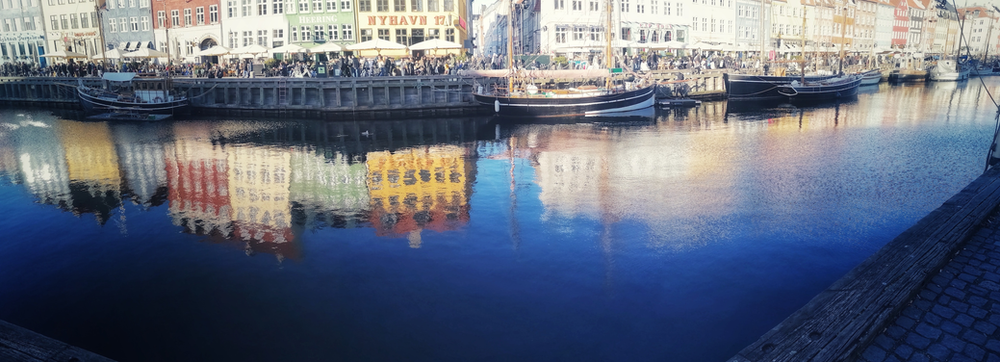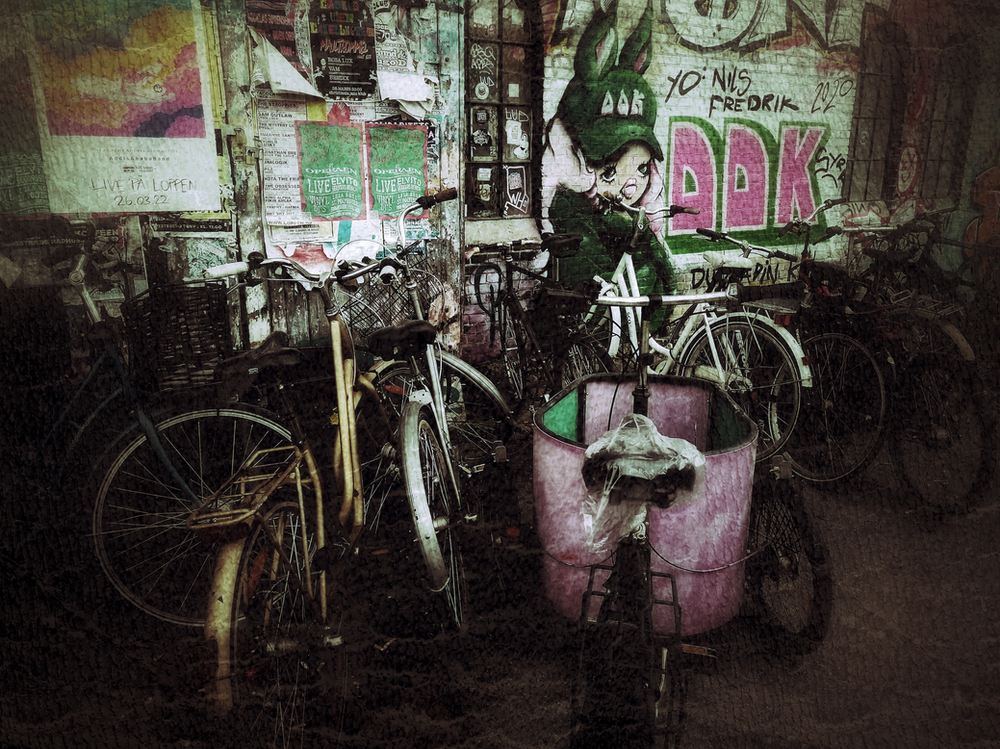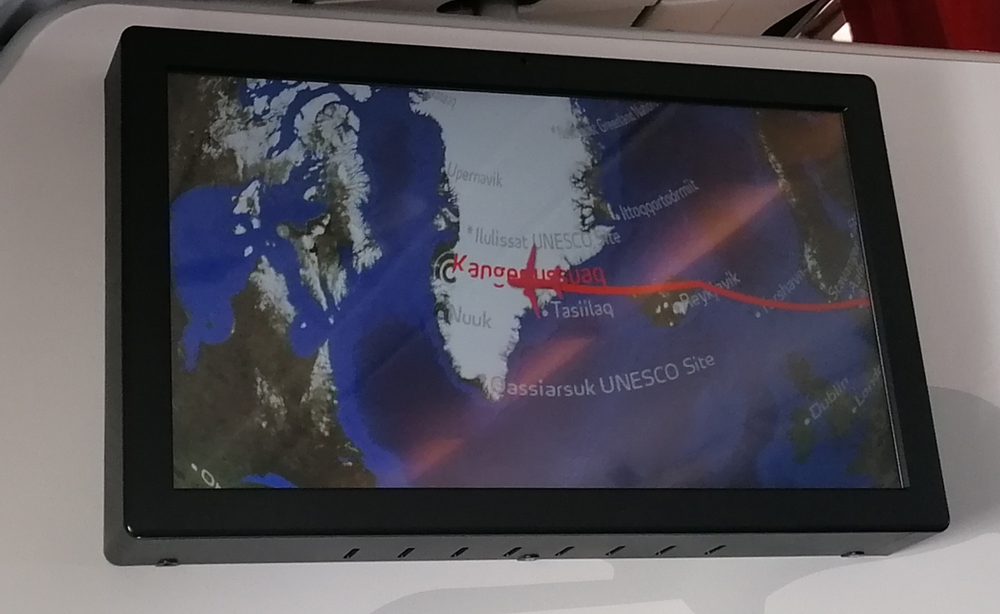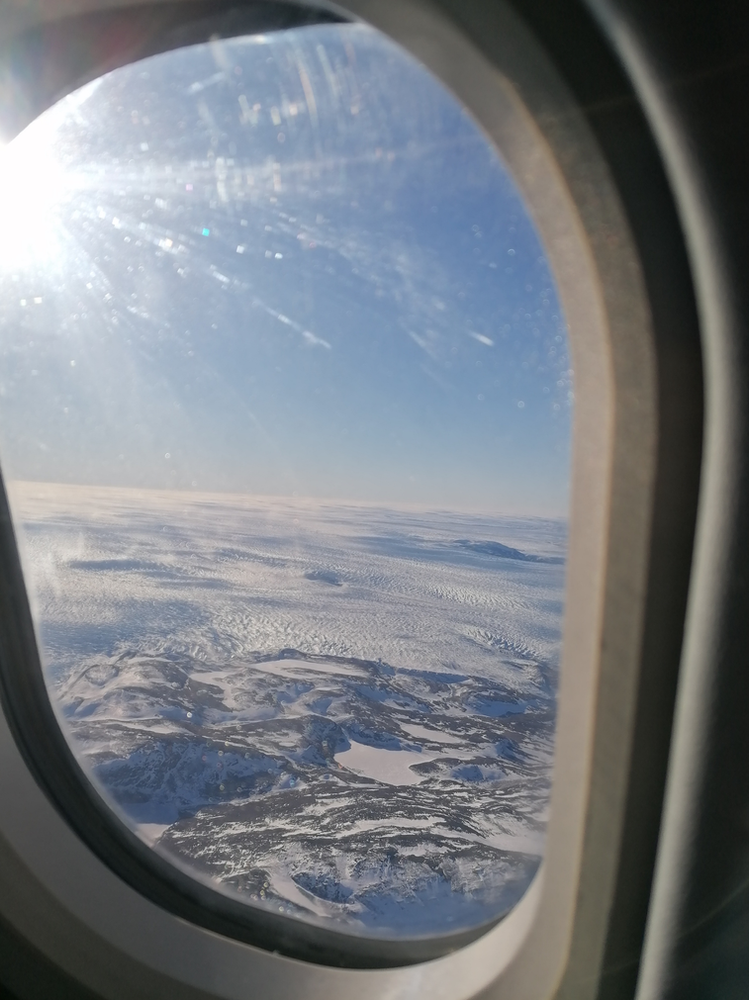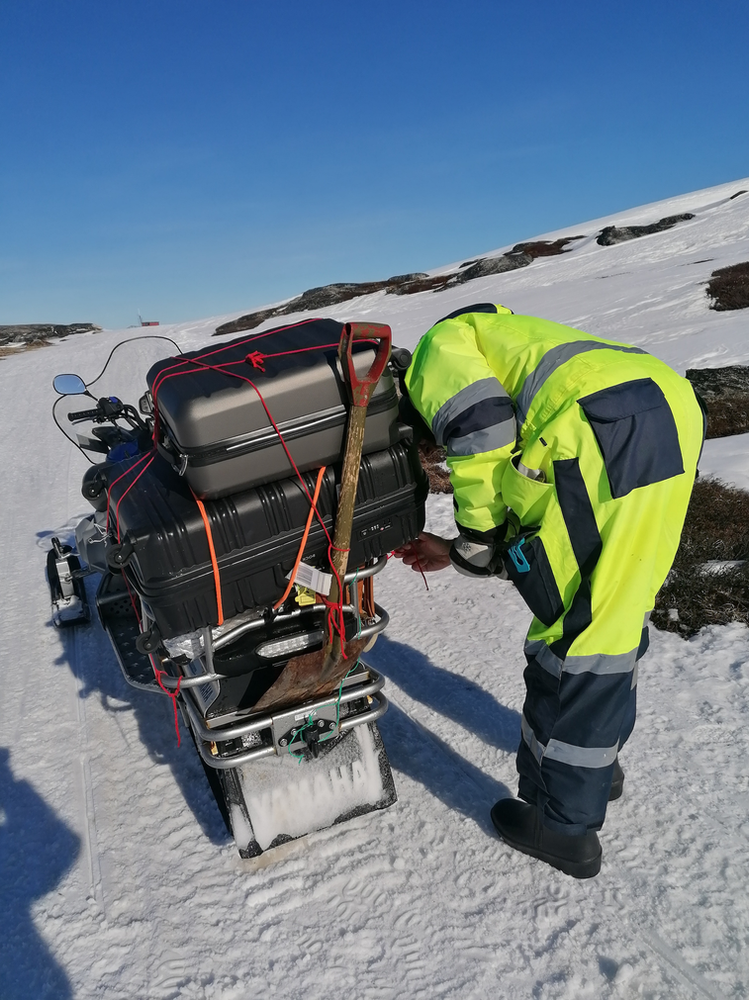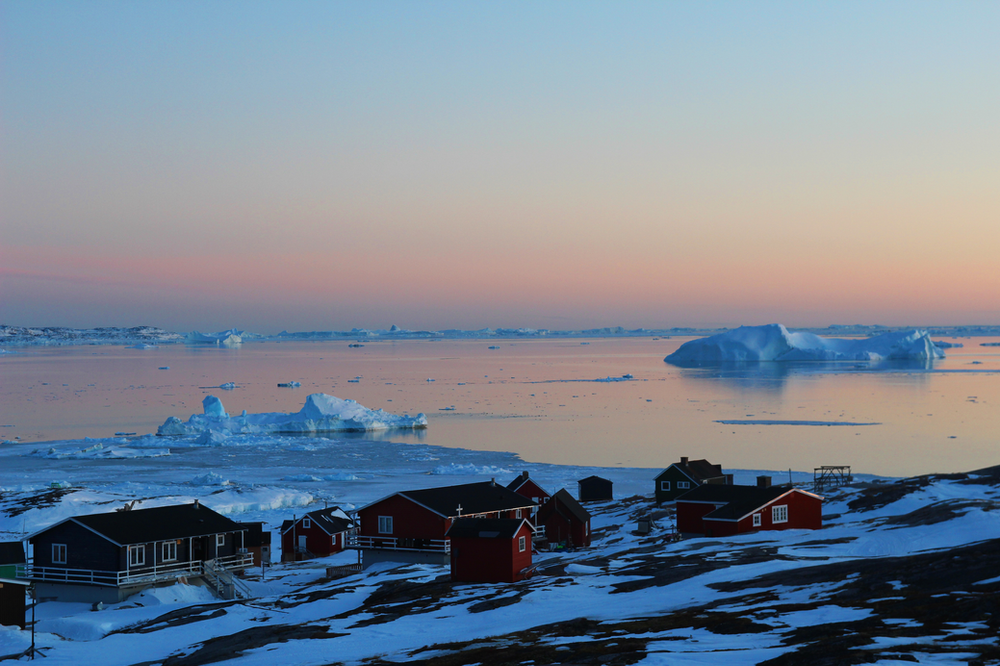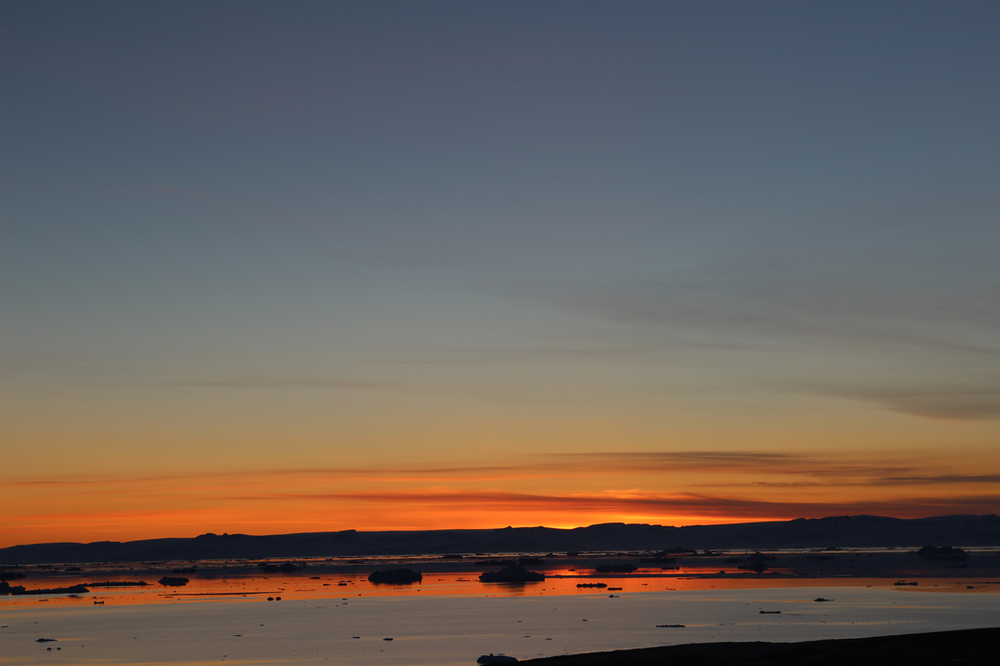Slow time - fast time: conversations with Greenland landscape
I’ve been wandering around Copenhagen for a few days with Steve, visiting museums and galleries, overheating in the famous greenhouses, and watching the world go by from the sides of the canals.
Went for a walk around the very colourful counter-cultural area of Christiania, a self-proclaimed autonomous district in the borough of Christianshavn. It's an anarchist community on the site of a former military barracks. A bit too touristy for my liking, but I guess they make money from them, although aparently they have their own currency and don't pay taxes.
Came across a pertinent outdoor exhibition of Greenland photographic stills from a film about warming ice flows and glaciers.
And then a pertinent sign post
Up at 5 am and into a waiting cab, say good bye to Steve for 7 weeks - who promptly goes back to bed, while I speed to the airport. Business class has its perks – checking in is without problems and once I have located the Aviators lounge at the airport I can relax and have breakfast with as much coffee as I can consume.
On the plane my window seat is spacious and right at the front. I have feet rests that go up and down and can push the seat back without feeling guilty that I’m cramming the person seated behind me. The safety routine is shown on screen and much more entertaining that the usual ones as it shows a man sitting in a kayak inflating his safety vest, and a woman sliding down a snowy hillside emulating the escape hatches from the plane. The graphics are also quite sweet – referencing Inuit legends of flying and drum playing figures, and the woman in whose hair lives all the sea creatures.
I’m finally on route to Kangerlussaq – the map on the screen shows a red plane trailing a line from Copenhagen tells me that I’m at an altitude of 10980 meters.
All I can see from the iced window is billowing clouds with blue sky far below. I imagine that the clouds are snow reaching to the horizon.
Lunch comes early; I’m given a vegan main course of an indeterminate slightly spicy yellow pulse with bits of vegetable mixed in, and a bread roll with cheese. I eat everything, especially the fruit salad, conscious that I’m not going to see much fruit or veg for the next 7 weeks and I need to up my Vitamin C intake whenever I can.
Perusing the in-flight magazine I skip the articles about the gastronomic delights of new restaurants arriving in Greenland, and go for the article about the photographer Carsten Egevang who travels with hunters and documents wild life. I learn about the little auk, a small 150gm bird – the most Greenlandic bird of all – and hope that I might see some. The only other article of interest is that in the last 25 years there have been no reports of deaths by polar bear attacks.
I return to my book – Sarah Moss’ ‘Cold Earth’ – she’s sleeping in a tent, having bad dreams, and working on an archaeological dig for lost Viking settlements somewhere in West Greenland. It’s setting the scene for me. There's land appearing through the frozen window rising up above the clouds. I wonder how tall they are - has anyone ever stood on those peaks?
Then we're closer and I can see huge frozen lakes between snow and rock.
Arriving at the tiny Kangerlusaaq airport, which seems to be full of people crowding in from all sides - I rush from the luxury of business class to a cramped propellor-driven plane and a hastily served plastic cup of coffee as we fly for 45 mins to Illulissat, hoping that my luggage has caught up with me.
When we arrive I have to grab a cab to meet Andreas outside a supermarket. Apparently there is too much ice in the bay to go by boat. So he announces that I am going to ride with him on his snow mobile to Oqaatsut. The smallest settlement in Avannaata county, it's located between the UNESCO heritage Kangia icefjord and Eqi glacier and 22 kilometres away - no roads. Not sure how transporting all my luggage is going to work.
A fairly hair-raising two hour ride across snow covered hills and ice sheets (with the sea below), with a number of stops to readjust the luggage tied on with two bungies and various bit of red string, twice when we skid, and once the bike turns on it’s side trapping my leg underneath it. Once we’ve heaved it up – no mean feat on a very slippery ice sheet (I'm trying not tho think about how much water is underneath us) - we set off again. Several times I have to get off and walk as the bike can’t make it up the hills carrying me and luggage. This is mad and pretty irresponsible.
We finally arrive at the village Oqaatsut. It’s also known as Rodebay, as it was a well-known trading post for Dutch whalers in the 18th century. A scattered assortment of painted wooden houses on a peninsular, flanked by two bays – one frozen solid with boats lying an crazy angles, and on the other, pale blue open sea with large chunks of ice floating on it. Flocks of small birds periodically flit across the surface.
The artists’ house is pretty basic; the one where we sleep has certainly seen better days. The other where we cook is fine. I’m told it’s also the studio, but I can’t say I’m convinced as there is no dedicated space in which to work if you’re a painter like me, especially if others are eating their lunch or just sitting around having a coffee. I’m not sure I should comment on the bathroom arrangements! Just to say we have to collect water everyday, and there is no flushing....
I shall concentrate on the positives! My room is in the top of the house and looks across to the bay with the large and small icebergs.
The light and landscape outside is amazing - I have a cursory walk around with Andreas who points out all the houses and tells me who lives in each of them, the old whale buildings where they used to drag the whales in, the small fishery factory, and, most important, the supermarket (still no fresh veg till the supply boat can get in). Dogs lie chained up in various parts of the village in their respective teams, lying about scratching or sniffing or scraping at the ground, periodically clamouring and howling excitedly when large chunks of seal/fish arrives.
The world outside is turning pink and I rush out ( as much as one can over thick slippery snow) down the the edge of the sea to watch the sun set over the sea, turning the surface a luminous orange interspersed by silhouetted iceberg, before I turn in after a long day. I wake up in the middle of the night; from my bedroom window there are the northern lights – pale pulsating shivery streaks moving vertically across the sky.
Addendum: If anyone wants information about this residency please get in touch with me. I really do not recommend going with this organisation.
